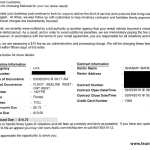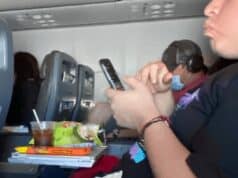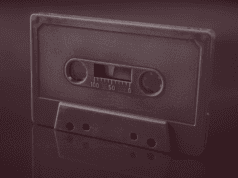Sugar-coated messages are in bad taste. In survey after survey, people ask for straight talk on all issues. They don't want artificially-sweetened words that supposedly will help the medicine—that is, the tough messages–go down.
Sugar-coated messages are still a national problem though. Companies continue to spin convoluted webs trying to trap you. It's hard to figure out what they're trying to tell you. Because of their obfuscation, they insult your intelligence, waste your time, and show disrespect. To me, this is the exact opposite of LEAN COMMUNICATIONS, which is what I advocate and try to practice.
 For example, LeanBlog.org founder Mark Graban showed me a classic example of a confusing, sugar-coated letter he recently received from a rental car company. Click on the photo (left) for a full-sized, readable view. Don't do this at work— or at home either.
For example, LeanBlog.org founder Mark Graban showed me a classic example of a confusing, sugar-coated letter he recently received from a rental car company. Click on the photo (left) for a full-sized, readable view. Don't do this at work— or at home either.
If you need to deliver a difficult message to customers or to anyone else for that matter, be direct. Specifically:
- Get to the point immediately. Don't bury the message. It's okay for dogs to bury their treasures, but not individuals who want to convey information and be perceived as being credible. In a five-paragraph letter, the meat of the letter to Mark didn't start until the third paragraph.
- Take responsibility. Don't hide behind the passive voice and inanimate objects. For instance, this letter included many wishy-washy phrases such as “we recently were notified,” “your rental vehicle incurred a violation,” and “we follow up with customers …even when additional charges are inadvertently incurred.”
- Explain what actions you expect your customer to take, especially if you are providing options. Be explicit and precise so you don't leave any room open to interpretation. In this situation, two of us had different reactions on what we could or should do next, based on what we thought we were reading.
If you can't say or write something well, rent writing or editing help. Or, if that's beyond your budget, at least test your difficult messages with some individuals before you send them.
Why is this so important? Bad messaging often adds insult to injury, especially if the reader/customer starts to question the underlying substance of the message. After reading this letter, I started to wonder what the company's priorities were around customers and customer service.
Customers generally have many choices. After reading about the extra 75 cents that became $10.75 with the administrative charge, I decided I'd rather walk…to the next rental car counter. What about you?
What do you think? Please scroll down (or click) to post a comment. Or please share the post with your thoughts on LinkedIn – and follow me or connect with me there.
Did you like this post? Make sure you don't miss a post or podcast — Subscribe to get notified about posts via email daily or weekly.
Check out my latest book, The Mistakes That Make Us: Cultivating a Culture of Learning and Innovation:










Sorry, but I have to disagree here. Their letter was terse and professional. While you could argue the first line is not necessary, the flow for the remainder of the letter is very logical and to the point:
Paragraph 1: Statement of customer appreciation (nothing wrong with that although I suppose you could shorten the sentence somewhat) and general purpose for correspondence (follow-up on outstanding charges)
Paragraph 2: Explanation of outstanding charge and the rental car’s agency recent actions to resolve it
Paragraph 3: Specific charge to customer (how much and when)
Table 1: Evidence
Paragraph 4: Brief closing with contact information
***
They also confined their message to 1 piece of paper (A3) which is very important in my book.
All that said, the $10 fee charged by the rental car agency is outrageous. If they had charged me $1 for administrative costs and cost of money, I would accept that. But a $10 fee on tolls is just another income stream for them. $10 – $.75 toll – $1.00 (admin + cost of money) = $8.25 profit.
People say they want direct messages. They also say they are good with change and are open to taking risks. We know that often what people say is very different from the way they actually behave. This is one of the many, many fascinating elements of human psychology – we’re a complicated bunch. Agreed that being direct is useful, but realize that it probably will still result in annoyed or offended people – just for different reasons. “Lean” communications are not necessarily the shortest, but the most effective. Just like coating bitter medicines with an easy-to-swallow coating really does make them easier to swallow, if a certain amount of “sugarcoating” makes the communication more effective, then go for it.
Interesting comments! Thanks for sharing.
My tolerance for poorly-written customer service letters is pretty low, probably lower than Jason’s and Lewis’. I too admire and appreciate one-page letters. And you can be direct, friendly and empathetic in a short space. I still maintain that this letter–along with its messages–is a poor example of effective customer communication and relations building.
.-= Liz Guthridge ´s last blog ..Get Conference Tips and Themes from a LEAN Summit Groupie =-.
Now I’m curious. What form of communication would you have chosen and what would the exact content of the message be?
I didn’t appreciate the puffery of the first paragraph about how they are trying to find new ways of serving me, as a customer… including sticking me with a $10 “administrative fee.” I’d prefer they express their love for me as a customer in other communications and just get to the point in the letter. I missed a toll booth and ended up stuck in the transponder lane… just tell me I have a fine and that they’re passing it along to me. “We welcome the opportunity to serve you” is a bit much, also, after that fee. I wish it had just been more of a bill than a letter. My bills from the MD office don’t have tons of flowery language about how they enjoy having me as a patient – it’s a business transaction, leave it at that, I’d say.
I disagree. Call me a Mary Poppins fan, “a spoon full of sugar helps the medicine go down.” Without a little sugar, these letters risk coming off cold and harsh however don’t pour the whole sugar bag into it which tastes just as bad. Balance and moderation is best. This example was not too bad with the potential improvement of cutting the opening line.
Jason, if I were the rental car company, I would have sent an email message instead of a letter. Email messags are faster and able to reach customers who are traveling. As for the message, I’d get to the point immediately, recognizing the customer is busy–although I’d strive for a friendly tone. (And I’d certainly rethink the mega-surcharge on the toll, but that’s not a pure communication issue.) I had the same reaction as Mark.
And by the way, being courteous and friendly is different from sugarcoating. Sugarcoating is for pills, not communication.
.-= Liz Guthridge ´s last blog ..Get Conference Tips and Themes from a LEAN Summit Groupie =-.